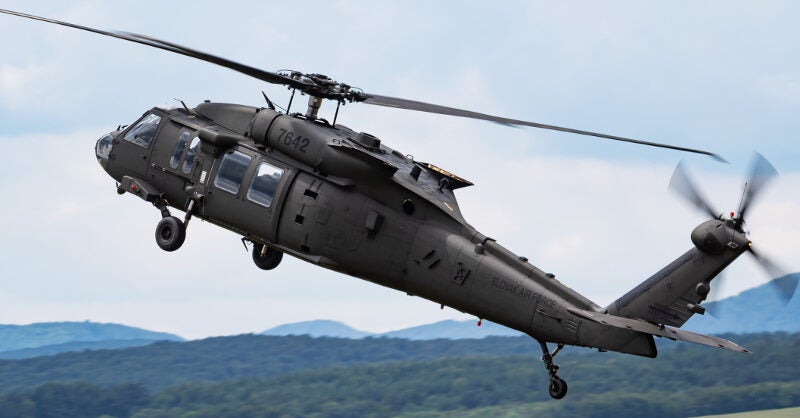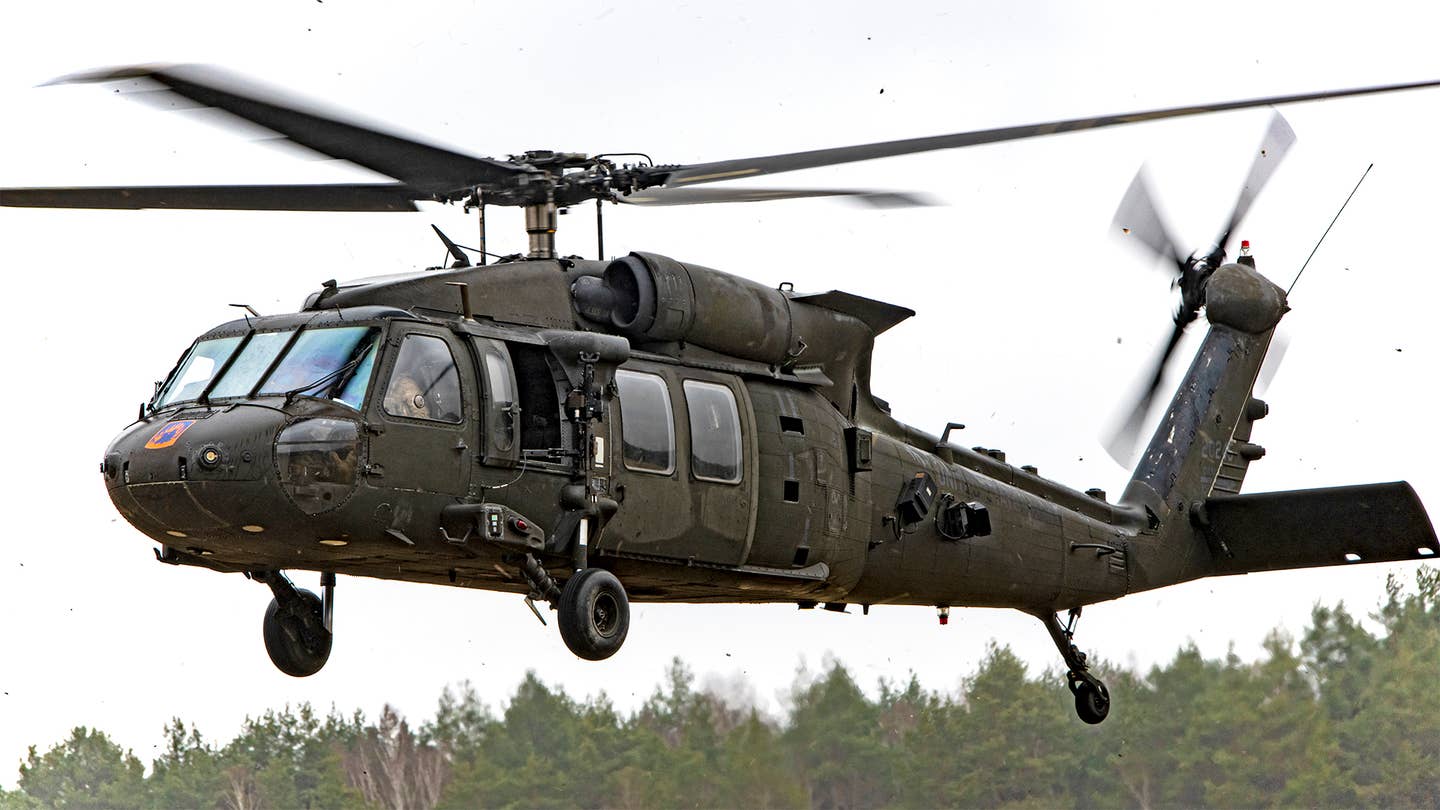Getting My Blackhawk Uh 60 To Work
Table of ContentsOur Blackhawk Uh 60 PDFsAll about Blackhawk Uh 60The Ultimate Guide To Blackhawk Uh 60The Greatest Guide To Blackhawk Uh 609 Simple Techniques For Blackhawk Uh 60The smart Trick of Blackhawk Uh 60 That Nobody is Talking AboutExamine This Report about Blackhawk Uh 60
The pilot can make the helicopter create essentially lift utilizing a control called the, which raises or lowers the angle (additionally called) that all the blades make in the oncoming air as they rotate around. For optimum lift, the blades need to make a dramatically steep angle.Relocating the collective the other method relocates the swash plates pull back, which draws on the pitch web links and tilts the blades to a shallower angle. At the end of the collective, there's a throttle linked by a cable television to the engine. This resembles the accelerator of a vehicle or the throttle of a motorcycle, enhancing or reducing the engine rate, guiding the blades to make essentially lift.
This is where the rotating of the helicopter backward and forward occurs, which makes it possible for the rotor blades to offer a steeper angle when they're on the left side of the craft than when they get on the right. In other words, they produce even more lift on the left, tilting the craft to the right and also guiding it because direction.
A Biased View of Blackhawk Uh 60
The resourceful swash plate mechanism converts the pilot's motions right into the appropriate activity of the rotor blades. Now, the following time you see a helicopter take off, you understand the technicians behind it and also can relax guaranteed that whoever is flying the craft recognizes what they're doing!
This phase deals with the research of medium speed influence on the reduced surface area of helicopter blades. It aims to recommend a representative finite aspect modeling (FEM) based on experimental monitorings of these kinds of impacts. Helicopter blades are big complex composite frameworks that run in a severe dynamic setting.

9 Simple Techniques For Blackhawk Uh 60
Additionally, this strategy is expanded to thicker woven composites with various ply positionings, with the introduction of particular natural components. In the very first component of this phase, some specific influence examinations are carried out and assessed in order to define the key issues that have to be represented in the development of the model.
The damage law and failing behavior are described. A certain user interface element exists. Lastly the modeling strategy is confirmed on various effect tests.
The helicopter descends as a result of out of balance pressures: The weight of the helicopters is more than the lift pressure of air. The Timeless Mechanics Division at St. Olaf University discusses that also without the blades flexing upwards, there are equivalent and also opposite forces acting on the paper helicopter that create it to rotate.
The Basic Principles Of Blackhawk Uh 60
This high stress results in equal and also contrary opposing forces that trigger the spin., a set of equal and also opposite pressures acting horizontally under each blade and also on the body of the paper helicopter cause rotation.
These components are often called rotors, blades, rotor blades, wings, or perhaps propellers. The blades offer the lift as well as are variables that create the helicopter to rotate. The width of both blades a fantastic read with each other equals the size of the paper layout used to make the helicopter. The density of the blades is one layer of paper.

Rumored Buzz on Blackhawk Uh 60
A lot of experiments for this age group account for 3 kinds of variables: independent, dependent, and regulated. These variables are altered as well as researched to identify if they are the cause in a cause-and-effect connection.
In some cases independent variables are not controlled by the researcher however monitored to see exactly how their changes may influence various other variables. For example, time (seconds, days, years) is an independent variable that can be tracked to see just how it may affect other variables (e. g., the growth of a plant). Dependent variables are what researchers observe, gauge, or count in an experiment.

Independent variables are variables that may transform a reliant variable - blackhawk uh 60. That's the point of an experiment: To learn what might or might not affect a dependent variable! These kinds of variables are the "impact" in a cause-and-effect relationship. Regulated variables vary that the Learn More Here researcher does not allow to alter.
How Blackhawk Uh 60 can Save You Time, Stress, and Money.
A basic two-rotor paper helicopter is a good layout selection to research this typical issue. The researcher can control any published here of the four helicopter components to determine what variables affect the trip time of a paper helicopter. By adjusting a component of the helicopter, scientists are adjusting the independent variable to determine if this adjustment influences the moment the helicopter remains in the air (time in the air is the reliant variable).
The width of the paper helicopter tail is one-third the size of the template. The tail offers the paper helicopter flight security. The stabilizer is basically the lower pointer of the tail. A straight fold in the tail creates the stabilizer. This layer also provides the paper helicopter trip stability by shifting the design's center of gravity downward.
The majority of experiments for this age team account for 3 kinds of variables: independent, reliant, as well as managed. These variables are altered and also examined to identify if they are the reason in a cause-and-effect relationship.
5 Easy Facts About Blackhawk Uh 60 Shown
Often independent variables are not adjusted by the scientist but checked to see just how their changes might impact various other variables. For example, time (seconds, days, years) is an independent variable that can be tracked to see how it might influence other variables (e. g., the growth of a plant). Reliant variables are what researchers observe, measure, or matter in an experiment.
Independent variables are aspects that may change a dependent variable. Managed variables are variables that the scientist does not allow to change.
A basic two-rotor paper helicopter is a great design selection to study this common issue. The scientist can manipulate any one of the 4 helicopter components to establish what elements impact the trip time of a paper helicopter. By readjusting a part of the helicopter, scientists are adjusting the independent variable to figure out if this modification impacts the moment the helicopter stays in the air (time in the air is the dependent variable).